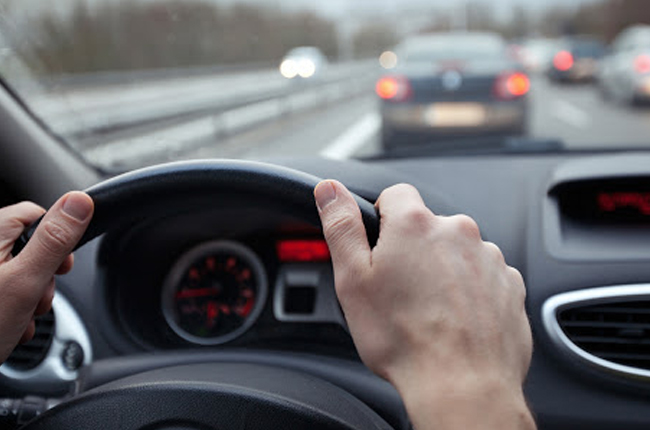
Dashboard warning lights are not to be ignored. We know that they’re a sign that things could take a turn for the worse and cost you an arm and a leg to fix, but it’s much better than getting stranded and being left with an even more expensive repair bill. It could also mean that you’ve been skipping your preventative maintenance intervals, or that you just got unlucky.
So if you’re not convinced that you need to get that check engine light checked out, we’ll give you a reason or two.
It’s annoying

Warning lights usually have two settings, on or off. Unlike your gauge cluster, which can vary its brightness depending on the setting or whether your lights are on or off, warning lights only come in one brightness level: 100%.
Not only is it annoying, but that’s exactly why it’s designed that way, to get your attention. Other cars will come with a digital display that will flash the specific warning every so often, or evertime you turn on your car. It’s a constant reminder to get your car checked out, and the only way to make the annoyance go away is to bring it to the dealer or service provider that can diagnose, clear, or fix the code in the ECU telling your dashboard warning light to flare up.
Your car is telling you something important

That being said, dashboard warning lights are, as their name suggests, warnings. They notify you on anything and almost everything that is wrong with your car. For example, if you unwittingly left the parking brake engaged, there’s a light for that. If you’re low on fuel, there’s a light for that. A certain system is malfunctioning like your ABS module, there is also a light for that. There is a light or warning for pretty much every system in your car.
Reduced performance

So if your vehicle’s not working perfectly, you can expect it to perform to the best of its ability. As is the case with people, an injury will hamper performance. So is the case with cars. A busted sensor sending the wrong signals to the ECU might throw off the performance of a car, and maybe even force it into limp mode, where the engine protects itself from big loads and stresses. You may even experience a dip in fuel economy, and if you plan to sell your car, bundling in a check engine light, isn’t something that will help you seal the deal.
It could lead to something serious

That being said, a warning on your dashboard means that something in your car isn’t working properly, or is not meant to be engaged like the parking brake. Either that or some of the safety systems are getting triggered by a particular input. In the case of traction control, your car is curbing the power delivery from the engine to keep it stable, in the case of blind-spot monitoring, there is a car that you might not have seen. The same goes for other safety systems like lane-keep assist, and forward collision detection.
However, a dashboard warning light could also mean that there is something mechanically imperfect with your vehicle. A check engine light is usually an indication that something has gone awry with your engine or any of its multiple systems. A battery light would indicate that either your battery is not charging, or that your vehicle is losing charge.
Most cars come with some sort of failsafe, and warning lights are among the first warning signs that the system can actively display to the driver in order to prevent something worse from happening. Pay attention to the lights and their corresponding meanings.
Latest Features
-
The difference between wax and polish / Tips & Advice
Confused about whether your car needs a wax or polish? This article will guide you on what they are and what to choose for your car.
-
The 6 things every Ford Ranger must pass before it leaves the factory / Featured Article
Every Ford Ranger, from the base model to the Ranger Raptor, goes through a full inspection process before it leaves the factory. This includes six steps that make sure it’s ready to drive a...
-
Which GAC AION EV is best for your everyday lifestyle? / Featured Article
The GAC AION lineup has something for everyone, maybe you're after space, speed, or just a smooth city drive. Here's a quick breakdown of which model might work best for your day-to-day life...
Popular Articles
-
Cheapest cars under P700,000 in the Philippines
Jerome Tresvalles · Sep 02, 2024
-
First car or next car, the Ford EcoSport is a tough package to beat
Jun 18, 2021
-
Car Maintenance checklist and guide – here’s everything you need to know
Earl Lee · Jan 12, 2021
-
Most fuel efficient family cars in the Philippines
Bryan Aaron Rivera · Nov 27, 2020
-
2021 Geely Okavango — Everything you need to know
Joey Deriquito · Nov 19, 2020
-
Family cars in the Philippines with the biggest trunks
Sep 20, 2023
-
Head to head: Toyota Rush vs. Suzuki XL7
Joey Deriquito · Oct 28, 2020
-
Why oil changes are important for your car
Earl Lee · Nov 10, 2020
-
2021 Kia Stonic — What you need to know about it
Joey Deriquito · Oct 16, 2020
-
Top 7 tips for buying a used car in the Philippines
Joey Deriquito · Nov 26, 2020




